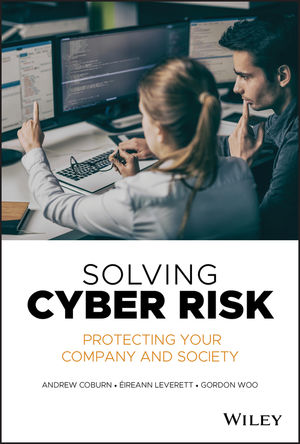Securing Your Organization’s International Supply Chain

Regardless of your products, your company most likely sources raw materials, parts, finished goods or packaging from foreign business partners. Leveraging business partners, as opposed to building their own foreign production capabilities, allows companies to shift suppliers to low-cost regions without worrying about their foreign investments. Every year the global supply chain and the flow of international goods continues to increase.
However, the global supply chain does not operate in a vacuum and can be disrupted by any number of factors including terrorism, theft, smuggling and natural disasters. Over the last decade, both the public and private sectors have worked in partnership to improve supply chain security while still facilitating trade and maintaining the flow of goods. Supply chain security programs like C-TPAT, PIP and AEO have been created to establish a standard for secure supply chains and give participants the benefits of reduced inspections and first-in-line privileges. While the physical security of a site has always been important, these programs also include the need to conduct supply chain risk assessments and evaluating the security of your business partners – two integral components of a secure supply chain.
Supply Chain Risk Assessments
To secure your supply chain, you must first know your supply chain. It’s a simple truth but often overlooked. In my experience, most companies start the process with the C-TPAT application and save the Supply Chain Risk Assessment for last. But, to do it right, a company looking to secure its supply chain should start with a thorough understanding of where it sources its raw materials, parts, sub-assemblies, finished goods, packaging and point-of-sales materials to get a complete picture of its supply chain.
Understanding where materials are sourced will lead to answering the question of who you are sourcing these materials from, and ultimately, how are the materials transported and by whom. In mapping your supply chain you should understand:
• Where do materials come from (origin), where do they go (route) and where do they end up (destination); and
• Who produces your materials, who handles your materials and who transports your materials.
Mapping the supply chain can be simple or complex depending on the nature of your business. But in doing so, you should be focused on:
• Nodes: Fixed points where goods are sourced, manufactured, stored, consolidated or held.
• Modes: Methods of transportation such as air, sea, rail, highway, etc.
The nature of threats against Nodes and Modes are different, as are the means of protecting them. The business partners that are operating these nodes and modes will be an integral part of your supply chain security program.
Assessing Business Partner Security
The typical first step in assessing your business partners is to gather some information on them. You’ll want to know where they are located, who owns the business, what is the nature and scope of their services, how big they are, who their other customers are. All of these factors will help you to gauge whether they have the size, knowledge and corporate oversight to effectively manage security.
During this process you will also want to assess whether they are certified in any supply chain security programs (i.e. C-TPAT). But be wary of the kinds of responses you may receive during this process. It would not be unheard of for companies use certification letters provided by paid third-party consultants and even letters from other customers who visited the site and thanked them for their cooperation as proof of their certification. If a business partner is certified they should be able to provide some evidence that can be verified. For example, in the C-TPAT program, they can provide their “SVI Number,” an identifier provided by U.S. Customs to certified companies.
It is a good practice to verify any evidence of certification that is provided. In the C-TPAT program, participants must provide their legal entity name, and they have the option to list (“doing business as”) various other legal entities covered by the certification; such as joint-ventures and subsidiaries. If the entity you are dealing with is not listed on their profile, you can reach out to the owner of the SVI number to see whether they are truly included in the certification. Other programs provide official listings of certified companies that are available online. Even though a business partner claims they are certified, you’ll want to do your homework to ensure that their credentials are valid.
During the information-gathering phase, most companies use some form of questionnaire to assess whether a company is certified or willing to meet their security requirements. Sometimes this includes some sort of self-assessment for non-certified companies asking them to assess their security and to identify gaps and corrective actions. Other companies will simply provide a list of requirements and ask the business partner to sign an acknowledgement letter that they meet the guidelines.
Whichever method you choose, don’t simply rely on a self-assessments or declarations of compliance. This is a good starting point, but somewhere along the line you need to see it for yourself. The old adage “trust but verify” comes to mind. Nothing can replace the value of visiting sites and performing your own assessments. This may take the form of a thorough audit or a quick assessment to determine whether their responses were accurate. Ultimately, what you are trying to determine is:
• Is the site secure with adequate lighting, access controls and appropriate security systems?
• Does the business partner practice good personnel controls and provide adequate training to employees?
• Are proper security procedures being followed such as supervised loading, independent counting, conveyance inspections and proper seal controls?
• Does the business partner have the financial, personnel and knowledge resources necessary to effectively manage security?
The importance of seeing your business partners face-to-face can’t be overstated. For most of us, its not possible to be on-site everyday watching over their shoulders. We rely on the business partners to manage security, and there has to be trust that their responses were accurate and true. At the same time, most of us do not have the time or resources to visit every business partner we use. You may wish to use some process to risk rate your business partners and prioritize which sites to visit first. For example, the following factors could be considered:
• Is the business partner located in a high-risk region? There are a number of websites, both public and private, that can provide country risk ratings.
• Who owns the business? Large global companies typically have their own internal compliance groups, documented processes and quality programs. This may indicate that there already is sufficient internal oversight.
• What does their customer base look like? In my experience, business partners servicing several multinational customers are visited frequently by my security counterparts in other companies.
• How much of your volume do they handle? Obviously, you’ll want to put some weighting on your larger business partners.
Making the effort to visit your business partners and evaluate their security programs has the direct benefit of improving your understanding of your supply chain and understanding the risks inherent in the international movement of goods. More importantly, it is an important part of understanding where the risks lie in your supply chain and what actions are necessary to close the gaps in your supply chain security program.
This article was previously published in the print magazine as "Trust but Verify: Securing Your International Supply Chain."
Looking for a reprint of this article?
From high-res PDFs to custom plaques, order your copy today!










